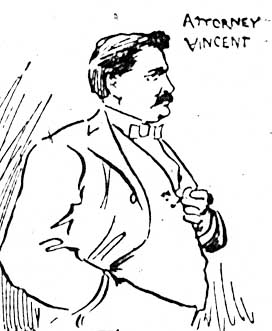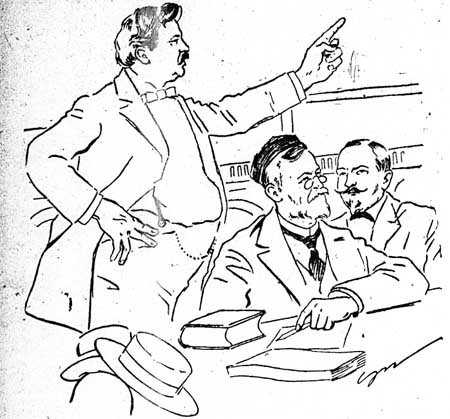
READ CHAPTER 1
GALLERY
WHO'S WHO
ATLAS
MYTHS DEBUNKED
FAMILY TREE
CONTACT THE AUTHOR
UPCOMING EVENTS
REVIEWS
CHICAGO HISTORY LINKS
READING SUGGESTIONS
BUY THIS BOOK
William Alexander Vincent

Address: Office, Rookery
Building, room 443. Home (at time of death), 128 Washington road, Lake
Forest.
Born: January 1, 1857, Wheeling, West Virginia.
His father, Dr. John A. Vincent, had been the mayor of Springfield.
Education: Ohio Wesleyan and Columbia universities.
1886: Moves to New Mexico as
counsel for the Atchison, Topeka and Sant Fe railroad; president of the New Mexico Bar Association.
While in New Mexico, receives a Democratic nomination to run for
Congress, but declined to run.
1888: Chief justice of the New Mexico Supreme court.
1889: Chief justice of
Montana; refuses the office of chief justice of Utah later.
Circa 1890: Moves to Chicago and practiced law with former Judge Adams A.
Goodrich, Judge Lorin C. Collins, and Clarence S. Darrow.
1893: Serves as the attorney for
the company that builds the world's first Ferris wheel for the World's
Columbian Exposition.
1897: Serves as lead defense counsel in the first Luetgert trial.
Died: March 21, 1919, at his office, of heart disease.
Survivors:
Sons Charles Ridgeley and Lieut. John Alexander Vincent (serving in
France at time of Vincent's death) and daughters Mrs. Lloyd Canby and Mrs.
Joseph S. Barker.

Vincent has shown himself to be a master of fence … has been cool and reserved, yet always alert and at times poignant…
Mr. Vincent is a man of striking appearance, being of medium height, but of strong build, his massive head being set on a pair of extraordinarily broad shoulders. He has few mannerisms in addressing the court, his favorite attitude being with his left hand tucked in the armhole of his vest. Occasionally, when emphasizing what he considers an important point, he drops this pose and gesticulates with both hands. His voice is always clear and distinct, although seldom being raised above what would be considered a conversational tone.
Pictures: Chicago Daily News, Aug. 25, 1897; Chicago Journal, Sept. 11, 1897; Chicago Journal, Sept. 22, 1897.